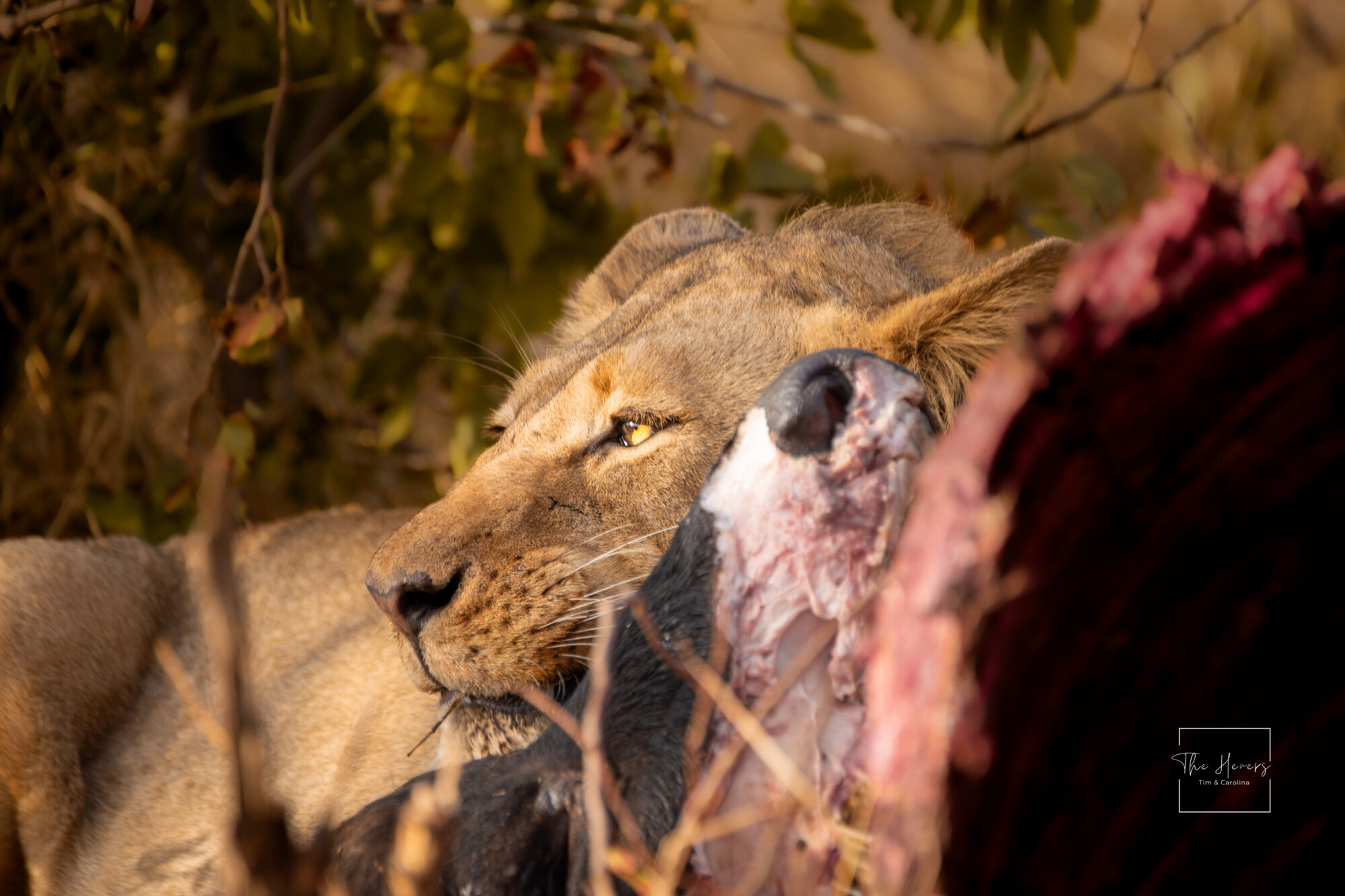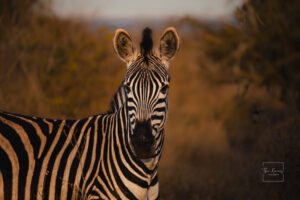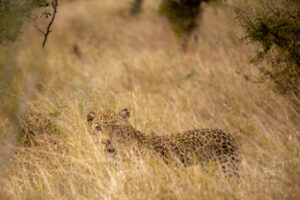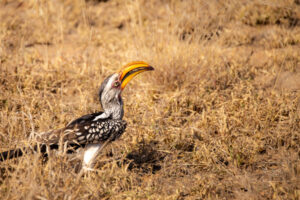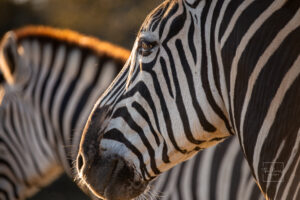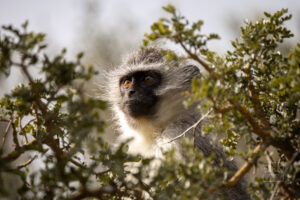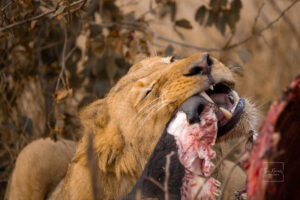The Kruger National Park: World famous and on the bucket list of almost every adventure tourist.
The park offers a great infrastructure for visitors that includes picnic sites, rest camps, waterholes, and hides. This makes it easily accessible for a self-drive safari. There are very stable predator populations which makes it likely to see lions, leopards, or cheetahs.
We visited the Kruger for 11 days and drove from south to north. During this time we stayed at 9 different rest camps inside the park and only did self-drive-safaris.
Here is some important information if you are planning to visit the park in the future!
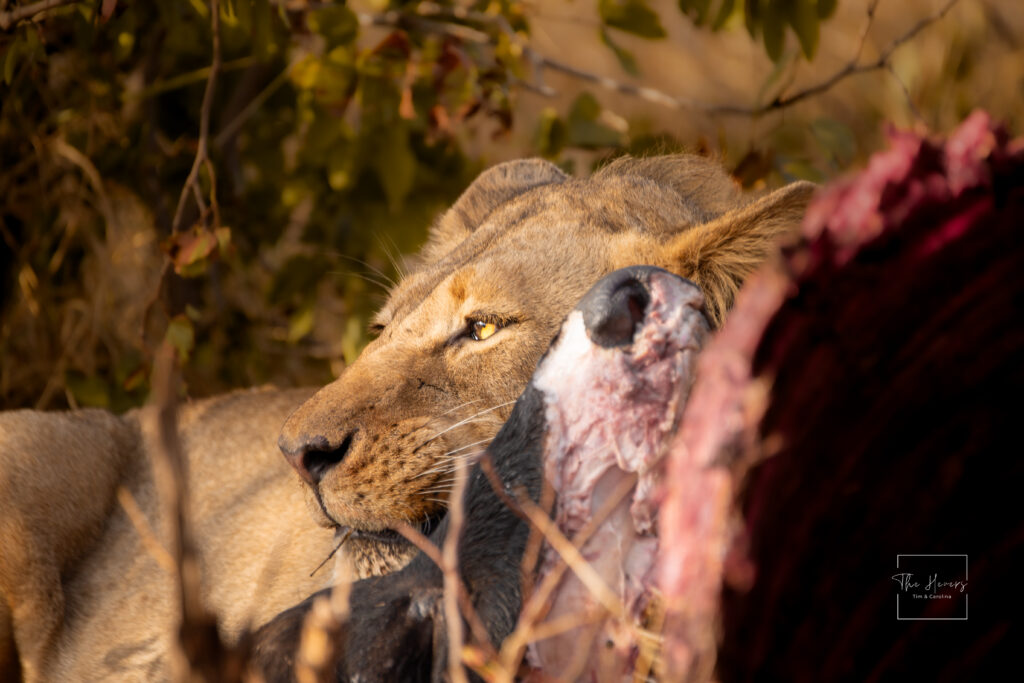
Where is Kruger National Park located?
The Kruger National Park spans the provinces of Mpumalanga and Limpopo in the northeastern part of South Africa. Situated just to the south of Zimbabwe and west of Mozambique, this park is now an integral part of the Great Limpopo Transfrontier Park. This visionary initiative aims to create a park that connects the Kruger National Park with neighboring game reserves in Zimbabwe and Mozambique. As a part of this project, fences are already being removed, allowing wildlife to freely roam.
The Kruger National Park itself covers an area of 19.623 km2 (7.576 miles2), nearly 2.000.000 hectares. It is approx. 360 km (220 mi) long from north to south and approx. 65 km (40 mi) wide from east to west. This is about the size of Israel! That makes the park the biggest one in South Africa and one of the greatest in Africa.
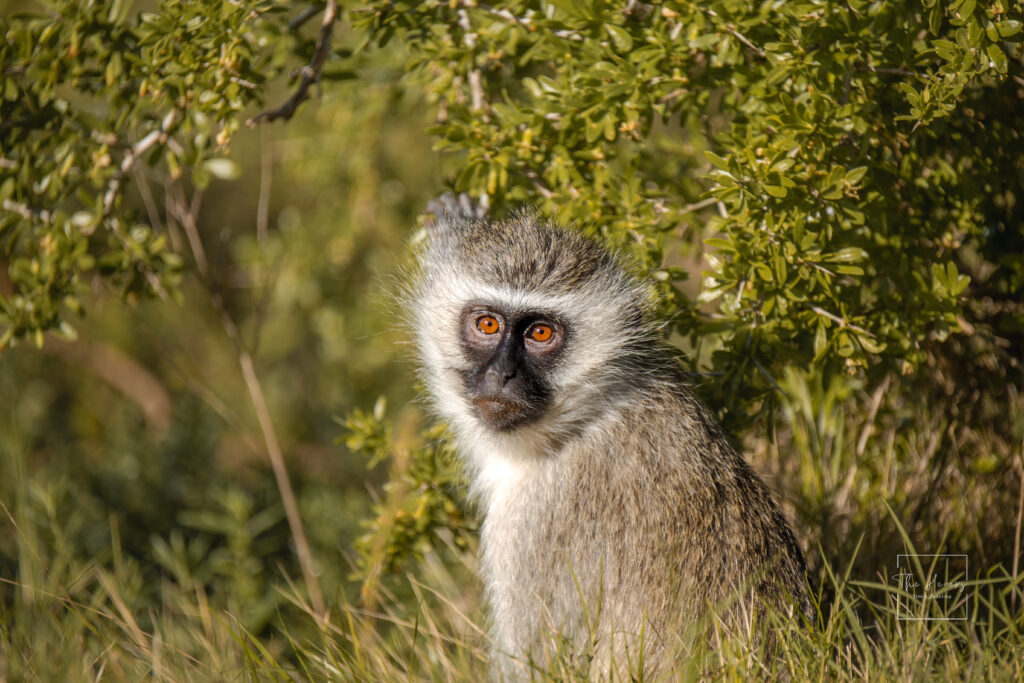
How to visit Kruger National Park?
Kruger National Park is located about 5 hours east of Johannesburg.
The distance is easily done in one day with a rental car. If you want to do a self-drive safari, it is recommended to book a rental car anyway, which you can then also use for your trip through the Kruger.
You don’t need a 4×4 car for going on safari, a small car will do its job perfectly fine. However, you should keep in mind that some of the gravel roads can be slippery, especially during the rainy season, which makes driving a bit more challenging.
We have already done some safari trips in a normal small car. However, for Kruger this time we had an SUV with AWD. That was a bit more fun to drive, especially because you sit a bit higher and can spot the game better.
Is Kruger National Park malaria free?
No!
In general, the risk of getting infected with malaria is lower during the winter season in South Africa, because this also marks the dry season. That’s because the mosquito needs warm, tropical weather to thrive.
However, it’s important to note that instances of malaria still get reported during winter. No matter during what season you visit the Kruger National Park for a safari vacation you should always be aware of the presence of this disease.
Please consult your doctor to find out if you want to take anti-malaria medication during your trip to the bush.
As always, prevention is the most effective: Wear only long clothing, especially after sunset, and use good insect repellent. We have kept to these rules and decided against malaria prophylaxis. But this is no medical advice in any way, so please inform yourself about the existing risks.

When is the best time to visit Kruger National Park?
That depends on what you would like to see!
When you want to easily spot wildlife then the dry season would be the right decision for you. From May to October the vegetation is very low which makes it easier to find animals. That is very useful and makes the whole experience more rewarding when you are not that experienced with going on self-drive safaris. Additionally, the game will gather at waterholes because the other temporary water sources won’t be there during the dry season. When you are into photography this is also an amazing time to visit because the golden color from the dry vegetation gives a very dreamy look to your pictures.
The temperatures will be cooler during winter and it is less humid. So don’t forget to bring a warm jacket!
The rainy season is during the summer months from November to April.
During this time of the year, you will experience lush, thick vegetation which forms beautiful landscapes. This makes it a bit more difficult to spot animals but you will be able to observe more birds during the rainy season. There is also the chance to observe newborn animals.
Just be aware that there will be heavy rainfalls which can result in closed roads inside the park and tricky driving conditions. It is hot and humid during summer, so be prepared for that.
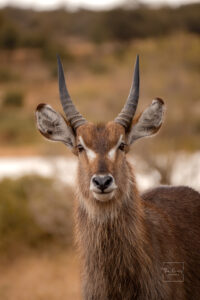
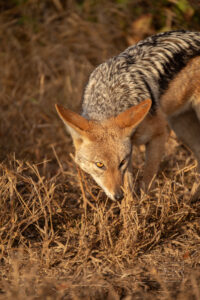
Which part of Kruger National Park is the best?
As you already know the Kruger is gigantic, so you have to accept that you will never see it all in one visit. We ourselves drove from south to north through the entire park in 11 days and still haven’t seen everything.
If you don’t have too much time, I would recommend focusing on one area. The park can be roughly divided into southern, central, and northern sections.
The southern part is most popular for first-time visitors or people who don’t schedule much time to visit the park. The game density is higher in this area because the landscape is quite diverse and your chances of spotting the big 5 are high. It’s also easily accessible because more than half of the entrance gates to the park are located in the south and the distances between rest camps, picnic sites, and viewpoints.
But due to that, this section can be quite crowded. When you spot an animal the chances are high that you won’t see it for long, because a lot of cars will gather around and might block the view. On the other hand, it can be quite convenient if you are not as experienced in game spotting yet, so you can just stop where other cars stop without the pressure to find some game by yourself.
The central Kruger consists of open grassland that attracts herding animals like wildebeest, zebra, or buffalo. Therefore, you will find a lot of predators in this area as well, like lions, cheetahs, or leopards. This section is also referred to as “Cat Country”.
The northern section offers very few rest camps to stay at and there are not many tourists in general. This area is very off the beaten path, which makes it very pleasant to visit but the game density is lower as well. Your sightings can be very large herds of elephants and buffaloes though. And the chances are high that you will be the only car which will make it a very special and intimate sighting. This section is also famous for birding, especially during the rainy season.
Is Kruger National Park worth visiting?
One thing in advance: This is our personal opinion and everyone will always have different experiences during their travels.
We agree after 11 days in the Kruger: It’s a love-hate relationship. The animal sightings are without a doubt some of the best we’ve had so far. But at what cost?
It is a life-changing experience to visit such a huge National Park. We knew that it is gigantic, but nothing could describe the feeling of looking down at a viewpoint and realizing that no matter where you are looking, from horizon to horizon – everything is pure wilderness. It’s just amazing that places like this still exist today.
The abundance of wildlife is amazing. You can see anything: leopard, lion, hyena, cheetah, elephant, rhino, zebra, wildebeest, impala, giraffe. There is literally nothing you can’t see in this park, you just have to know where to find it!
But everything is not as wonderful as it always seems online.
The park is more than crowded. Of course, we are also tourists and contribute to this. But especially in the southern section, you find many day visitors racing through the park to see as much as possible. This is absurd, considering the size of the park. There are also dozens of tour operators here who chauffeur hundreds of tourists through the Kruger during a day tour. For the guests to see as many animals as possible, they almost always exceed the speed limit and put others at risk.
So, you should be prepared to share a sighting with a lot of people, especially in the southern and central parts of the Kruger, so you often don’t even see the animal properly. This also means that the animals are often harassed (one injured leopard was chased by the cars behind it. Just because the people in the first row didn’t want anybody to drive in front of them).
The accommodations are very run down and not clean. There are usually 1-2 toilets and showers for about 20 people. For sure, accommodations in national parks are generally not luxurious. However, we have slept much better for less money in other national parks in South Africa.
If you stay longer in the park, you have to buy food there. However, the quality is not very good and the selection is not large. This is shocking considering how commercial the park is otherwise (there are fast food restaurants and even a car rental inside the park).
Would we travel to the Kruger National Park again?
Yes! But next time with a proper overlanding car, with our own gas stove, equipment, fridge, and freezer to bring our own food for a longer trip.
